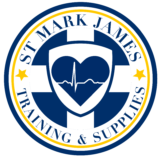Ischiogluteal bursitis involves tenderness of the bursa beneath the ischial tuberosity and tendon of the hamstring muscle. The bursa is responsible for reducing the friction amidst the tendon and bone. There are cases in which the bursa might become inflamed on its own or along with hamstring tendinitis or swelling of the tendon which causes the same symptoms.
https://www.youtube.com/watch?v=apNrZvjSZMo
What are the indications?
The indications of ischiogluteal bursitis strikingly resemble a hamstring tendon inflammation and includes tenderness and pain at the ischial tuberosity along with pain that is triggered if the hamstring muscles are stretched. The pain might gradually manifest after a sprinting session and aggravated by sitting.

Management
Initial care
- The individual should take a break from activity or sport
- Application of ice to minimize the pain and inflammation
If the symptoms become persistent, a doctor should be consulted. Perform hamstring strengthening and rehabilitation since pain might cause weakening due to limited use of the muscle.
Medical care
When differentiating the difference between tendinitis of the hamstring and ischiogluteal bursitis, it involves assessment of the success of therapies such as deep tissue massage. It is important to note that bursitis will not respond to massage as well as worsen after treatment.
The doctor might decide to administer a corticosteroid and localized anesthetic into the bursa that is filled with fluid. In some cases, strengthening of the hamstring is recommended.
